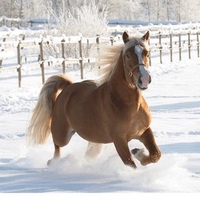The Death of the Horse
Transforming Conceptions and Practices in Finland
DOI:
https://doi.org/10.52537/humanimalia.10032Abstract
The role of the horse has changed significantly in Scandinavia as a consequence of the modernization and urbanization processes. At the same time the conceptions of horses have changed from work and hierarchy related servant and workmate to anthropomorphic and scientific animal conceptions. Consequently, the goal of the farmers, to get the work done and keep the horse and equipment fit to perform, has been replaced by the goal of leisure horse owners: a happy horse and the purpose for the horse to feel well. The ideas of human welfare have created an idea of a welfare horse.
Downloads

Downloads
Published
Issue
Section
License

This work is licensed under a Creative Commons Attribution-NonCommercial 4.0 International License.


